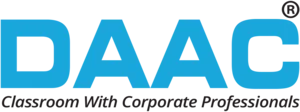Ikea’s Marketing Makeover: A Case Study Exploration

IKEA, the renowned furniture company with Swedish roots and a Dutch presence, recently ventured into the Indian market, drawing considerable interest. In this case study, a team of students from the DAAC (Digital Advertising and Content Creation) program delves into an in-depth analysis of IKEA's present digital marketing strategy in India. Their research aims to identify areas for improvement and propose practical solutions to enhance IKEA's digital presence and conversion rates.
Understanding IKEA's Audience:

To comprehend IKEA's digital marketing strategy, it's crucial to first understand its target audience in India. IKEA aims to reach individuals interested in home improvement, working from home, and those seeking affordable and functional furniture solutions. The identified characteristics of this target audience include active participation on social media platforms, a close alignment with Western culture, organizational skills, and a penchant for OTT shows.
Identified Problem:

The students conducted a detailed examination of IKEA's current digital marketing strategy in India and pinpointed a key area for improvement—the conversion rate. The conversion rate, representing the percentage of website users who fulfill a targeted goal out of total visitors, is a pivotal metric indicating the success of digital marketing efforts.
Analysis and Solutions:
1. Website Optimization:

The students found that IKEA's website could benefit from optimization for better user experience. The mobile website's speed scored below average at 31, leading to a high bounce rate. Recommendations include improving mobile speed by 7.62 seconds and enhancing the desktop website speed by 2 seconds. Additionally, suggestions encompass refining the User Interface/User Experience (UI/UX) with a more objective chatbot, engaging pop-up ads, more customer reviews, and prominent product suggestions.
2. Mobile Application:

While IKEA's mobile application offers a range of home furnishing products with a good user interface and experience, the students propose enhancements. Suggestions include incorporating notifications for offers, cart reminders, and workshop events. The introduction of in-app augmented reality features in the Indian application is also recommended for customers to visualize products in their own spaces at scale.
3. SEO (Search Engine Optimization):

The analysis of IKEA's SEO reveals opportunities for improvement. Recommendations include focusing on brand and product-specific high-intent keywords, publishing blogs on relevant topics, and optimizing on-page and off-page SEO activities to rank higher in search results.
4. SEM (Search Engine Marketing):

Search Engine Marketing (SEM) is a vital strategy for increasing website visibility. Students propose utilizing competitor-specific, high-intent keywords for paid search advertising. Blog ideas comparing IKEA with competitors are suggested to enhance both SEO and SEM, providing value to readers and building brand trust.
5. SMM (Social Media Marketing):

IKEA's impressive presence on Facebook, Instagram, Twitter, and YouTube is acknowledged. The students recommend utilizing Instagram's newly added 'guides' feature to create visual blogs leading to purchases directly from posts. This addition can enhance IKEA's already robust social media marketing strategy.
6. Remarketing:

Remarketing is identified as a valuable strategy for re-engaging visitors. The students propose a series of 15-second relatable video ads to lure back visitors to IKEA's website. Additionally, customer testimonial ads can be effective for those interested in the 'design your home' section, further nudging potential customers towards making a purchase.
7. Google and Quora Reviews:

Online Reputation Management (ORM) is emphasized, with a recommendation to respond to questions on the Google My Business Q&A Section. Acknowledging and addressing customer queries contributes to a positive brand image, crucial for customer trust. Similarly, addressing high-search volume questions on Quora is proposed to build brand trust and increase conversions.
8. WebEngage: Email, SMS, and Whatsapp Marketing:

WebEngage, a marketing automation tool, is suggested for IKEA to curate email, SMS, and WhatsApp campaigns. The tool can automate relevant and necessary communication with customers, enhancing customer engagement.
9. Telecalling:

For high-priced products and customized services, telecalling is proposed as a cost-effective and efficient method to disseminate information and market IKEA's offerings directly to interested customers.
Conclusion:
In conclusion, IKEA's unique position in India and its well-established target audience make it a standout brand. The students' extensive research and analysis of IKEA's digital marketing strategy resulted in practical solutions to improve conversion rates. The expected outcome of implementing these solutions is a growth from the original 1% conversion rate to 2.5%, aligning with industry averages. This comprehensive strategy positions IKEA for continued success in the Indian furniture market. As digital marketing continues to evolve, IKEA's commitment to refining its strategies showcases its dedication to meeting customer needs in the ever-changing landscape. If you're aspiring to decode and analyze digital marketing strategies like our students, exploring digital marketing courses could be your first step toward a successful career in this dynamic field.
Feel free to share your thoughts on these proposed solutions in the comments below!

